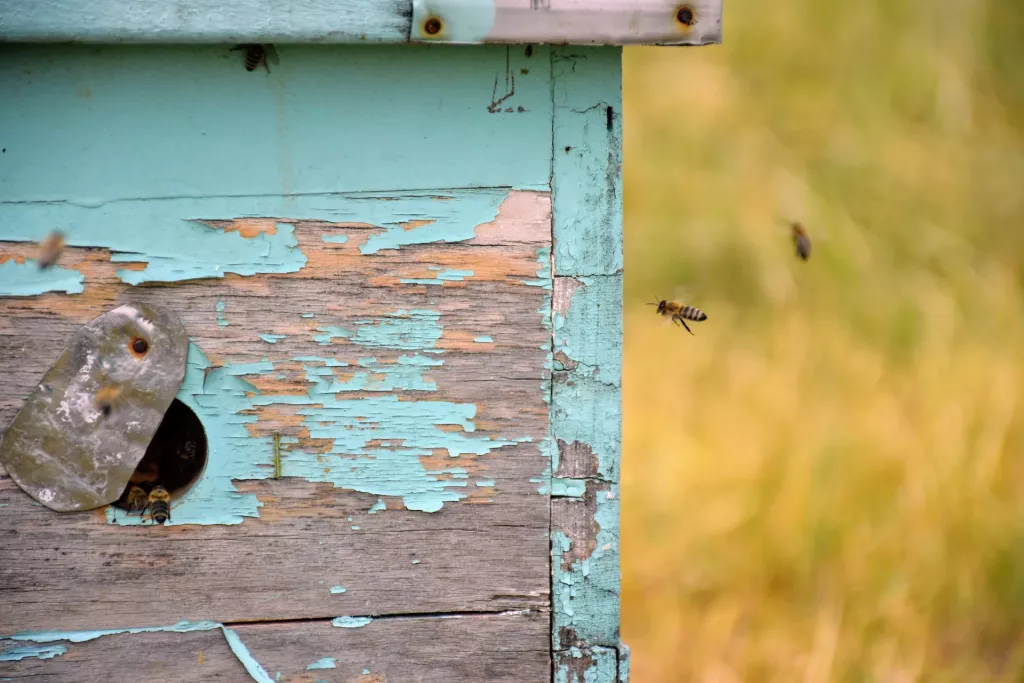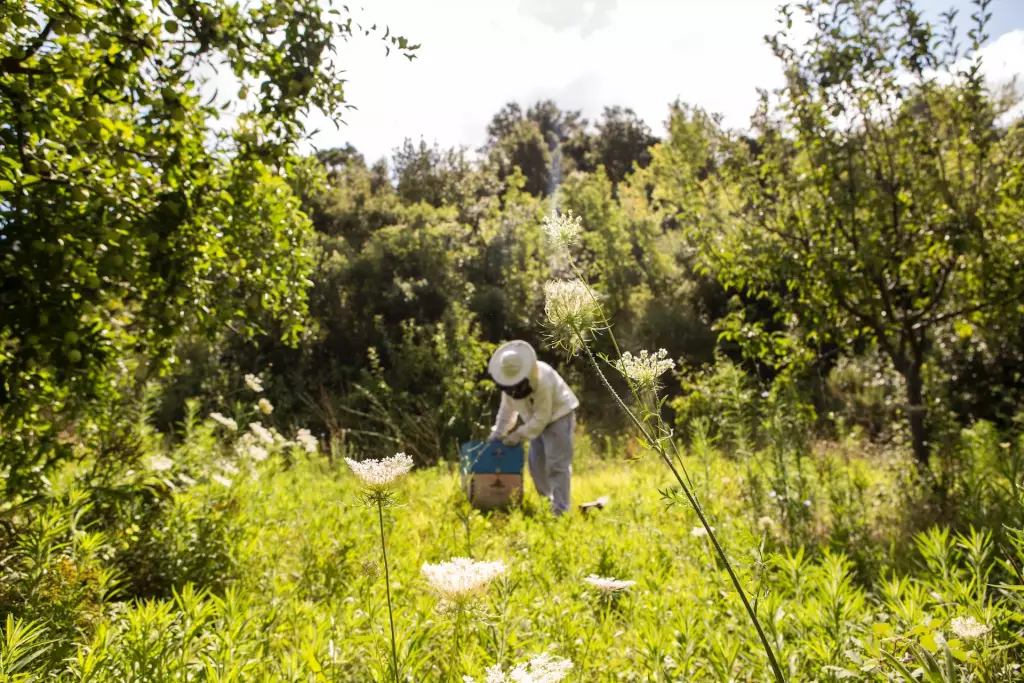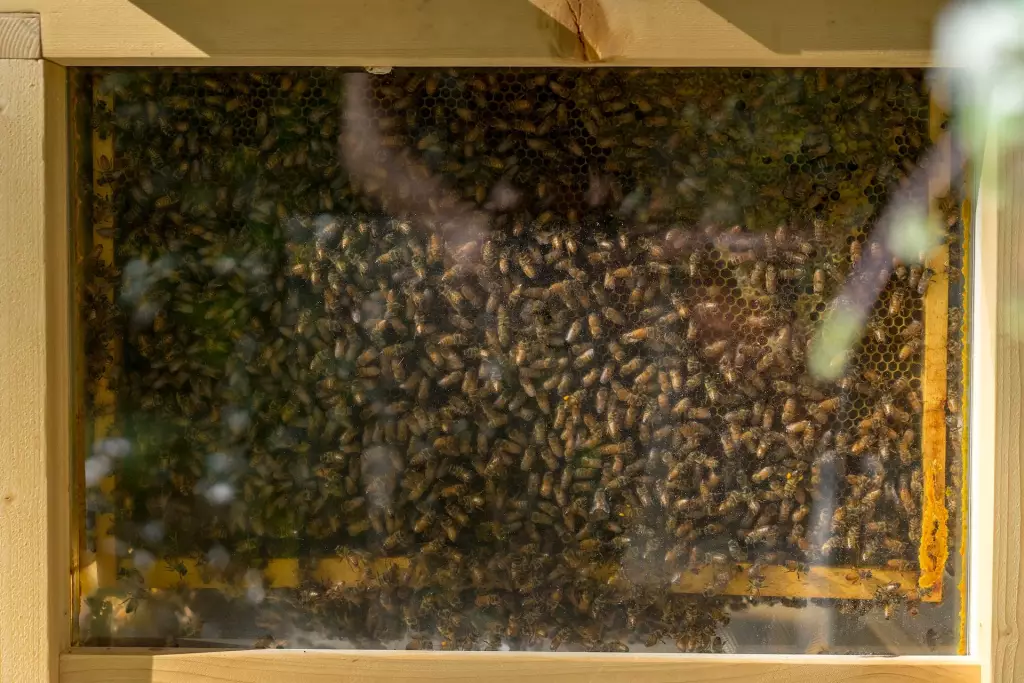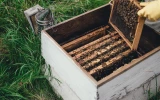How Long Do Honeybees Stay In One Place? (Swarm & Colony)
A colony of bees will swarm every time a hive gets too congested. A portion of the bees will depart the hive in search of a new location, while another portion will remain in the original hive. How long do bees stay in a swarm? And how long do the bees left in the hive stay there?
Honeybee colonies remain in the hive for years unless they abscond, succumb to chalkbrood or foulbrood diseases or parasites, suffer from colony collapse disorder or cold weather, or are wiped off by predators and insecticides. Honeybee swarms, however, only remain in one location for an hour to a few days.
One fundamental responsibility of a beekeeper is to make sure their colonies are healthy. You should be able to observe proper hive inspections, provide bees with food and flowers, and treat bee diseases.
Summary
- Bees nest and stay in a hive for years, and some even for decades.
- Bees will stay in the hive as long as conditions are favorable for continued growth.
- Beekeepers also have the responsibility to provide the bees with a hive that's suitable for life.

On this page:
How Long Do Honeybees Stay In The Hive?
Bees stay in the hive for years. In some cases, they stay there for decades. They never relocate the hive in random or without any reason.
Bees never leave the hive if the location and position are in good shape. If bees abandon the hive during a time of drought or winter, another bee colony may move onto the hive during a honey flow. Every year, you may observe bees settling in the same hive.
The bees' stay in the hive will also depend on your beekeeping practices. Some major problems you have to look at are improper hive conditions, lack of nutrition and food supplies, sporadic hive inspection, inadequate disease treatment, and queen bee issues.
If the conditions are favorable for beehives to continue growing during the spring and summer and hibernating intact during the winter, they can persist for an unlimited period of time.
The time of year has a significant impact on life in the colony. Flowers provide honey bee colonies with all of their needs. The colony's life cycle consequently matches that of the flowering plants in its surroundings.
Honeybees begin to increase their workforce each spring in anticipation of the bloom of spring flowers. Their populations increase during the summer, when they are at their largest number and the busiest.

As the seasons change and flowers become scarcer in the fall, bees begin to reduce their collecting rates. Honeybees consume the honey they produce in the spring, summer, and fall to survive the winter when there are no flowers.
Keep in mind that since the majority of wild bees reside in hollow trees, the hive can only last as long as the tree. They are also susceptible to pests, diseases, cold, wetness, and predators.
Bees have evolved to dwell above a void, which prevents the spread of disease by letting all the dead, and parasitized bees fall away. Scavengers, such as the wax moth, devour the dirty comb, removing viral and bacterial disease buildup.
Bees are always searching for new hive locations, and during swarming season, they settle in newly chosen hives. The ideal nesting location is high up in a cavity wall of an old house, where it's dry, well-ventilated, and well shielded from the majority of predators.
Every year, bee colonies swarm, but half of the colony remains in the original hive and starts over to build a new colony.
How Long Do Honeybees Stay In A Swarm?
Bees in a swarm momentarily wander about before settling on a branch of a tree, a shrub, or another object. Depending on the weather and the amount of time scouting bees need to find a new nest site, clusters typically remain immobile for an hour to a few days.
The cluster disperses and flies to a suitable spot for the new colony, such as a hollow tree. Bees will eventually move if you patiently ignore swarms, since they are transient. From a safe distance, feel free to observe and appreciate them while keeping others away from the swarm.
Some colonies of bees may swarm during the summer and autumn, while the majority of swarming occurs in the spring. On warm, sunny days, the majority of swarms depart the colony or relocate between 10am and 2pm. A swarm may spend several days in its resting location during wet weather.
Do Bees Come Back To The Same Hive Every Year?
The answer is both yes and no. Your old hive might be taken over by a new colony, but the one from last year won't be coming back.
Only as long as there is room to lay eggs, rear brood, and store food will honeybees remain in the same hive. The original set of bees you had are not at all the same bees still living in the old hive. A worker bee has a short lifespan of 6–8 weeks, and so new sets of bees will emerge on that time duration.
In the old hive, the new queen will first take a flight to mate with a number of different drones before returning and beginning to lay eggs. The new bees that hatch from those eggs are genetically distinct from the workers who stayed behind after the swarm.

Worker bees have a brief lifespan. Even though it appears to us that the hive contains the same bees, after two months all those old workers will be dead, effectively resulting in the establishment of a completely new colony.
Occasionally, a colony will go extinct over the winter, and in the early spring, a swarm searching for a home will find the empty hive and move in discreetly. This often takes place in the middle of a warm, sunny day and may be finished in about 40 minutes. If it happens, you might not notice that a hive that had bees in it last year now has an entirely new colony in it this year.
Although it may seem to us as though the bees remain in the same hive year after year, it is not always the same bees. Bees occasionally abandon a hive, leaving it empty for years.
As long as the hive satisfies their needs, the colony will continue to use it. Bees, except for the queen, do not live long enough to use it for more than a year. The hive might even have a new queen every year if the colony tends to swarm.
A colony of honeybees can only survive in a place if it is clean and is large enough to accommodate their efforts to fill it with honey, pollen, and the needs of the queen, who must lay 2,000 eggs per day during the flowering season.
Do Bees Stay In The Hive All Year?
If the hive conditions are favorable, yes, bees stay in it all year. During winter, they stay in the hive to avoid the cold. When flowers bloom, some bees are outside the hive busy foraging to collect nectar, pollen, propolis, and water. Most times, bees stay in the hive to nurse their brood, attend to the queen, clean the cells, build and cap comb, among other activities.
All winter long, the bees will remain in the hive, keeping it warm and eating honey. Some bees may leave the hive if the temperature rises beyond 40 degrees to reduce waste buildup. All your beehives must have access to food, water, and warmth in order to survive the winter.
In winter, especially in northern latitudes, it is crucial to ensure proper hive location. To prevent the buildup of moisture inside the hive, hives need to be protected from the wind while still having adequate airflow. The sun in the morning helps warm the hives during the day.

To stop heat loss from the cluster as it rises to the top of the food stores in areas that regularly freeze, you might want to use one of the several top-insulation systems, but make sure that there is sufficient ventilation. This can be accomplished using an upper entry, an auger hole in the side of the top box, or a ventilation rim. To guarantee proper air flow, care must be given.
How Do Bees Decide Where To Make A Hive?
After leaving the safety of their mother hive, a swarm of thousands of bees flies to a location to begin their hunt, perhaps to a simple branch to land on. Scout bees then look for a hollow space in a log, tree, or other building.
When scouts locate areas that satisfy their requirements for light, moisture, temperature, size, and accessibility, they instruct other bees using a dance to visit the same region. As more bees choose a certain area, they guide others there as well. This process continues until a sizable portion of the swarm has agreed upon a single location, at which point they lead the queen there and start work.
